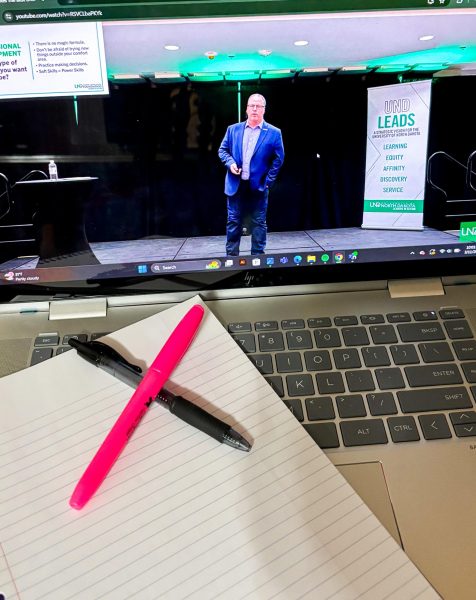Album tells story
Toward the beginning of “To Pimp a Butterfly,” King Kendrick Lamar admits it himself — he is pissed off and wants people to know it.
Through the assistance of his production, Lamar carries an angry and sometimes manic theme through what is surely the best hip-hop album of 2015 and quite possibly one of the best albums of 2015 period.
As a fan of Lamar, Butterfly was a departure from what I and most fans expected for his follow up to the instant classic “good kid, m.A.A.d. city.”
The perception in hip-hop is that Lamar is king of the industry and because of that I expected this album to be more of him pounding his chest letting people know it. He does that, but through the power of his music, not through bragging like so many rappers do in the genre.
To be clear, this is not a light hip-hop album. There are very few songs that will see any radio air time. Lamar delves into the heavy themes of race in America, depression, the struggles of his fame and his encounters with both God and Lucifer (referred to as Lucy throughout the album).
Though the subject matter may be dark at times, that does not limit Lamar and his producers when it comes to production.
To call Butterfly a hip-hop album is almost doing it a disservice. Lamar masterfully mixes 70s funk, free form jazz and traditional hip-hop beats to create the sometimes frenzied but engrossing production. It’s not something the casual hip-hop fan may enjoy, but this is not an album for the casual fan.
As with his previous albums, Lamar weaves a story from the first bars of “Wesley’s Theory” to the thought provoking ending in “Mortal Man.” Almost every song ends with Lamar speaking more and more to a mysterious person that is not revealed until the last song.
A majority of the album is predicated on calling out parts of society and culture that Lamar doesn’t agree with and thinks needs to change.
He kicks the album off with examining and criticizing the entertainment industry for pimping out young black talent, or the butterfly.
He continues on to speak on the corruption of money and greed and how it puts people in a box in “Institutionalized.” This jazzy joint comes with one of the only major features on Butterfly, as Snoop Dogg raps the bridges about a young Lamar, then setting up Lamar for his next verse.
Other highlights include Lamar examining himself through the contrasting songs of “u” and “i.”
In “u,” Lamar raps from the perspective of his own depression, telling him how he alienates people close to him and how he should feel ashamed for leaving his family and friends in Compton.
“Survivors guilt” is a theme Lamar struggles with throughout the album, something that has led to his depression.
Then on the flip side, in “i,” he speaks on how it is so important to express yourself and to love yourself, even in the face of depression.
He also uses contrasting themes in the songs “For Sale” and “How Much a Dollar Cost”. In the former, Lamar raps out how the devil is attempting to take his soul and lure him even further into temptation.
In “How Much a Dollar Cost,” Lamar shows how masterful of a storyteller he is through his tale of an encounter with a homeless person during his trip to South Africa. He examines how selfish he has become, refusing to give the bum any change. It’s later revealed that the homeless man is God trying to bring Lamar back from the clutches of Lucy and the entertainment industry.
Every song on Butterfly is a masterclass in production and storytelling. While it may be off putting to some, this is an album music fans need to listen to from start to finish to truly appreciate.
Lamar bucks the trend that has plagued hip-hop, in that he calls out racial and cultural problems instead of embracing them. While his new album is more focused on actual issues, Lamar makes it very clear that he’s not only the best in hip-hop, but one of the best, socially conscious artists in music today. “To Pimp a Butterfly” is a socially important album that everyone should listen to and I would gladly give it a 5 out of 5 stars.
Alex Stadnik is a staff writer for The Dakota Student. He can be reached at alex.stadnik@my.und.edu.






